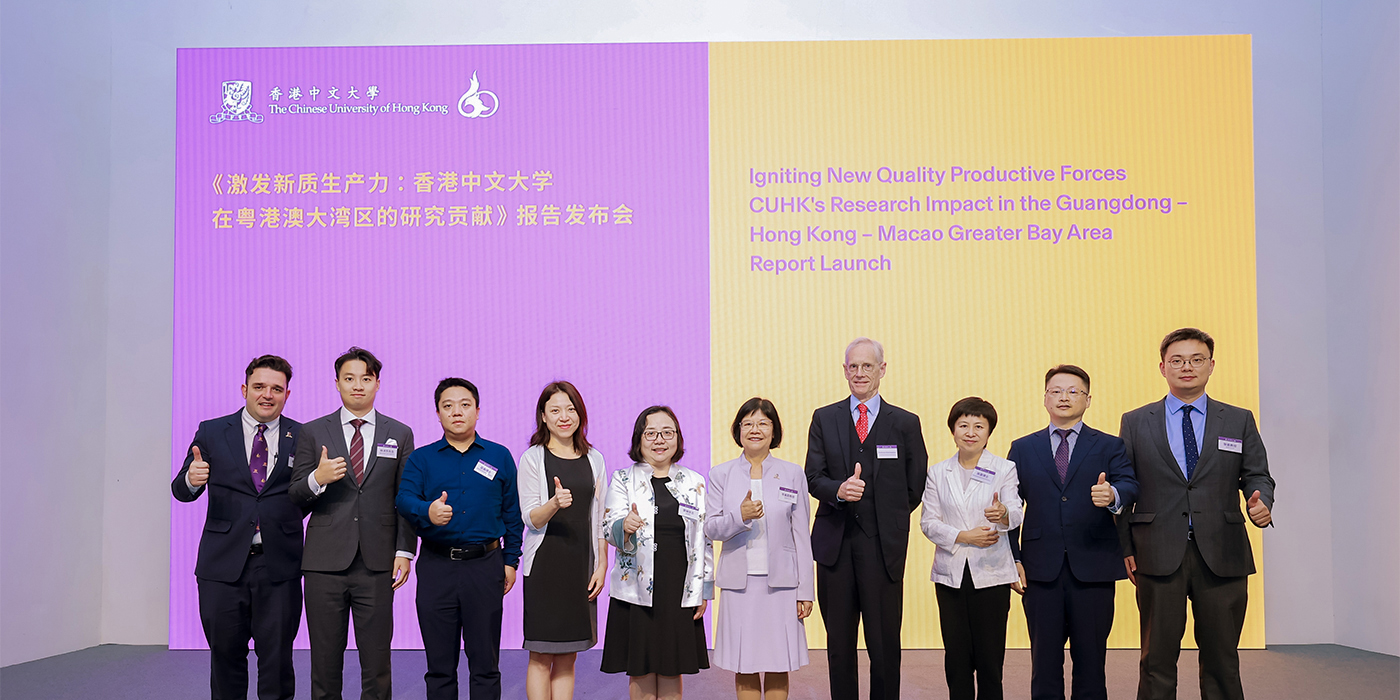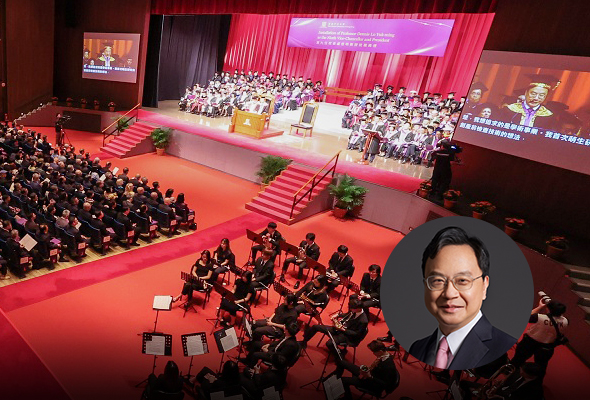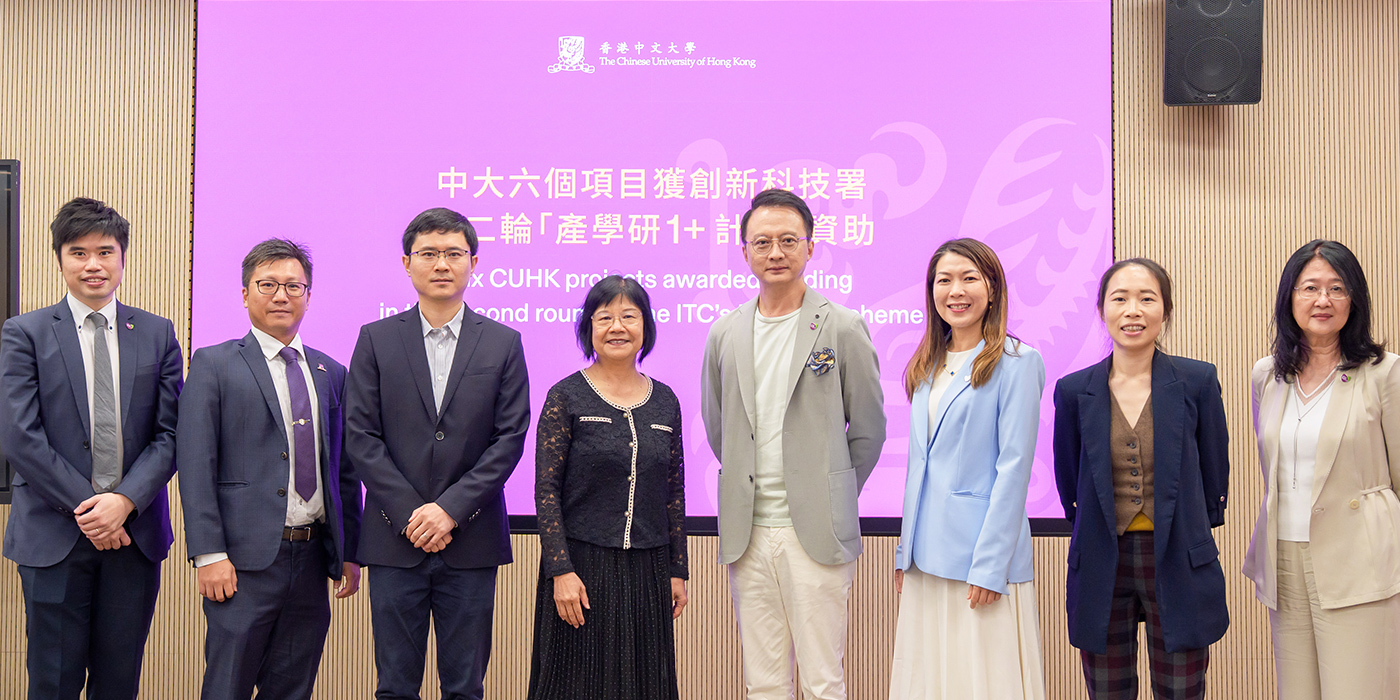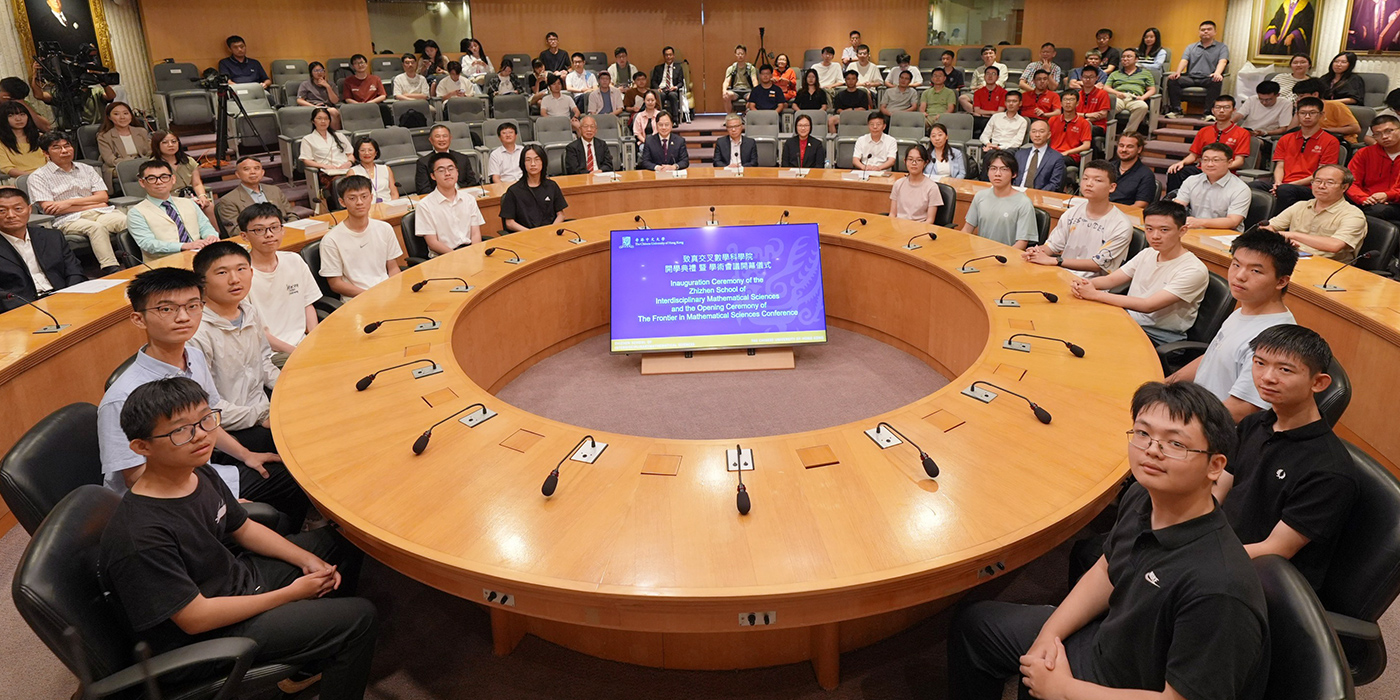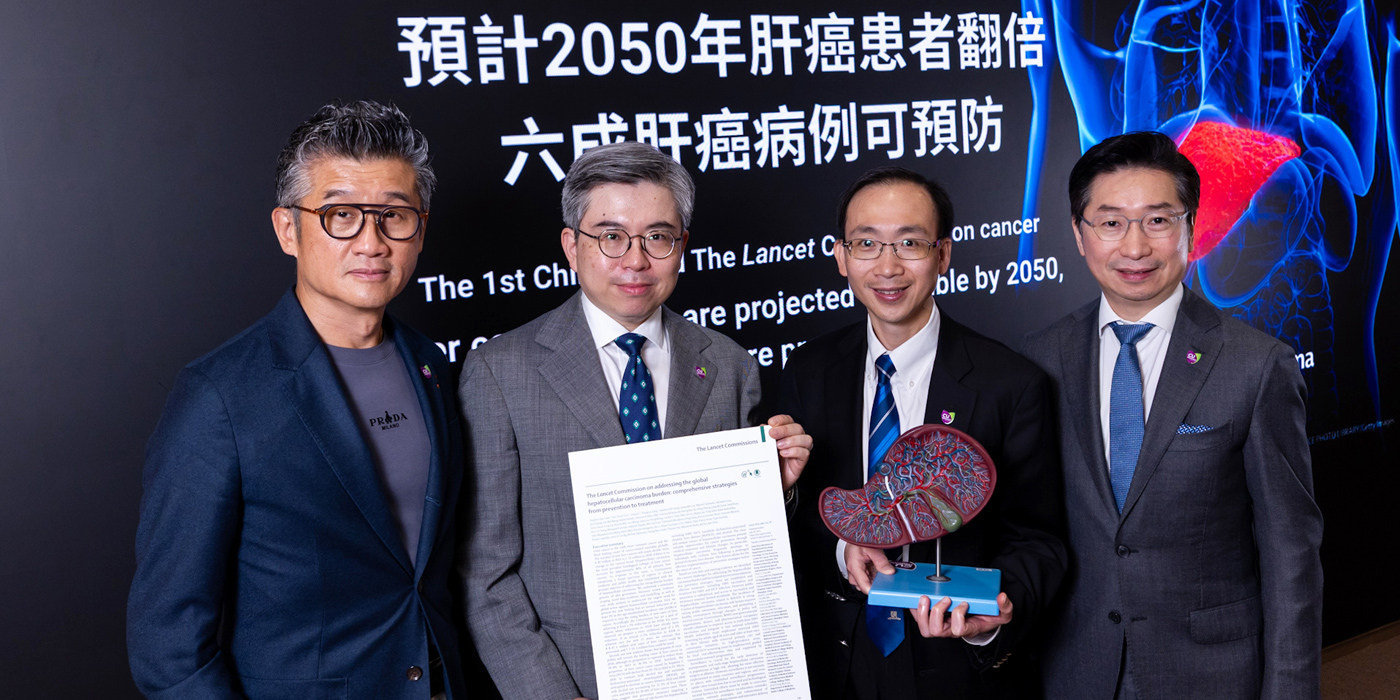Igniting impact
CUHK is playing a lead role in GBA research powerhouse, external report shows
CUHK research is making the highest scholarly impact overall, and especially in medicine and computer science, compared with other institutions in the Guangdong-Hong Kong-Macao Greater Bay Area (GBA), where research and development has grown rapidly in the past few years, a report has found.
The scholarly impact of CUHK’s research output overall surpasses all other universities, government research organisations and corporate research institutes in the GBA and the University boasts one of the most internationalised research portfolios, says the report, commissioned by CUHK and independently produced by Elsevier, a leading information and data analytics firm.
Elsevier’s report is the first assessment of the GBA research landscape conducted by a major scientific publisher since the central government outlined strategic goals in 2019 to develop the region as a global innovation and technology hub.
“According to the report, CUHK accounts for nearly 6% of all research and development in the Greater Bay Area, an economy that is larger than South Korea,” Pro-Vice-Chancellor (Research) Professor Sham Mai-har said at the launch of the report on 20 May. “The data tells us that we do the highest quality work. This is an impressive achievement for a university which only really got into intensive research in the 1990s.”
The report, “Driving innovation in the Guangdong-Hong Kong-Macao Greater Bay Area: Research impact and contribution by the Chinese University of Hong Kong”, starts off by examining megatrends that drove research impact in the GBA between 2018 and 2022 and examines the impact across a range of key metrics spanning citations, knowledge exchange potential and research collaborations, before zooming in on CUHK’s performance.
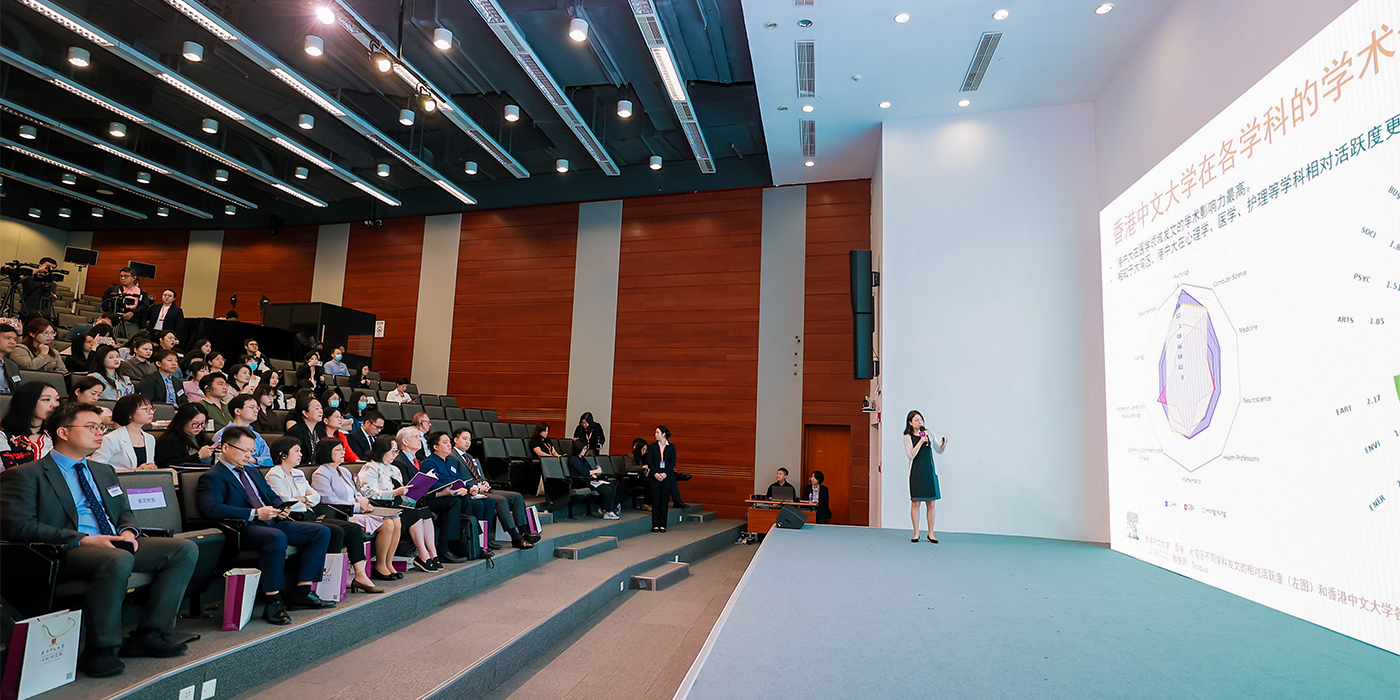
Elsevier uses bibliometrics from its abstract and citation database Scopus, which consolidates information from more than international 7,000 publishers.
The findings show that, on the whole, research and development in the GBA recorded compound annual growth of 17.9% in those five years.
“This report demonstrates the GBA’s phenomenal growth as a research and development powerhouse,” Professor Sham added. “If the GBA is going to take the next step and contribute to the development of the New Quality Productive Forces, this report is a powerful reminder that a strong research sector will be essential to that endeavour.”
Hong Kong plays a significant role in the GBA’s growth as a research and innovation powerhouse in China. It accounted for about 28% of total research output from the region, where roughly 16% of active researchers, numbering 66,900, were affiliated with institutions in the city, the report finds.
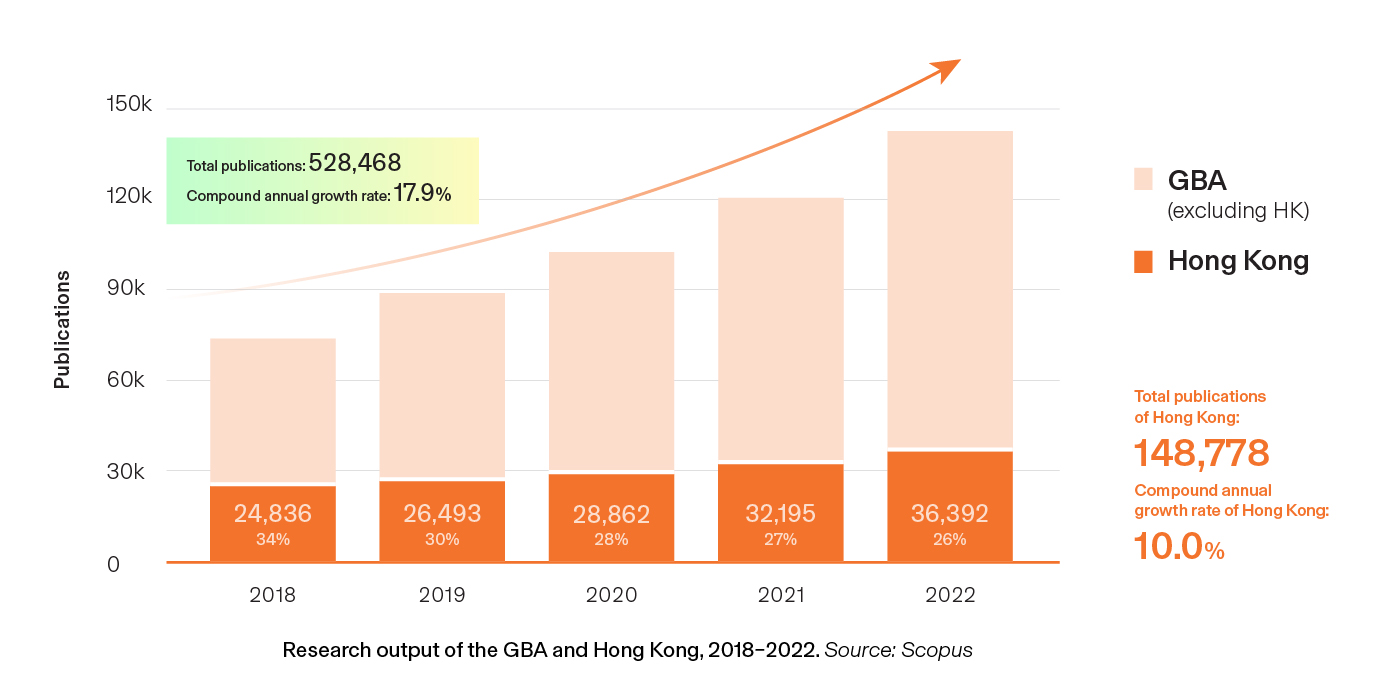
Closer analysis reveals CUHK contributed 5.4% to the GBA’s total research output and 7.4% to excellent research output, which is defined by publication in the world’s top 1% of high-impact journals indexed in Scopus.
On research impact, Hong Kong’s output had a field-weighted citation impact (FWCI) of 1.9, meaning its work was 90% more cited than the world average. The city’s FWCI was also 27% higher than the GBA’s 1.5. FWCI is calculated by comparing the number of citations actually received by a publication with the number of citations expected for a publication of the same type, year and subject.
Five out of the 10 top-performing institutions in the GBA were based in Hong Kong. Crucially, CUHK had the highest overall FWCI in the entire region. Going by individual subjects, its impact scores also came first in medicine and computer science.
Further, the report mapped research in the GBA against five fields of national strategic importance to assess the region’s contribution to national development. It examined performance in biomedicine, environmental science, clean energy, artificial intelligence and quantum technology.
CUHK made its largest research output in biomedicine, accounting for 5.3% of all such research in the GBA. The varsity’s FWCIs in all five strategic areas also eclipsed averages across the region.
In terms of collaborative research, the report finds that the GBA conducted 30.2% of its joint studies with international partners. This figure was 41.1% for Hong Kong overall and 42.9% for CUHK, indicating the strength of the university’s research collaborations relative to peers in Hong Kong and the wider region. Nearly 40% of CUHK’s research output involved the participation of GBA institutions, among which, 60% of CUHK’s collaborations were co-authored with GBA institutions and those beyond the region, indicating the University’s commitment to bridging the region with its partners further afield.
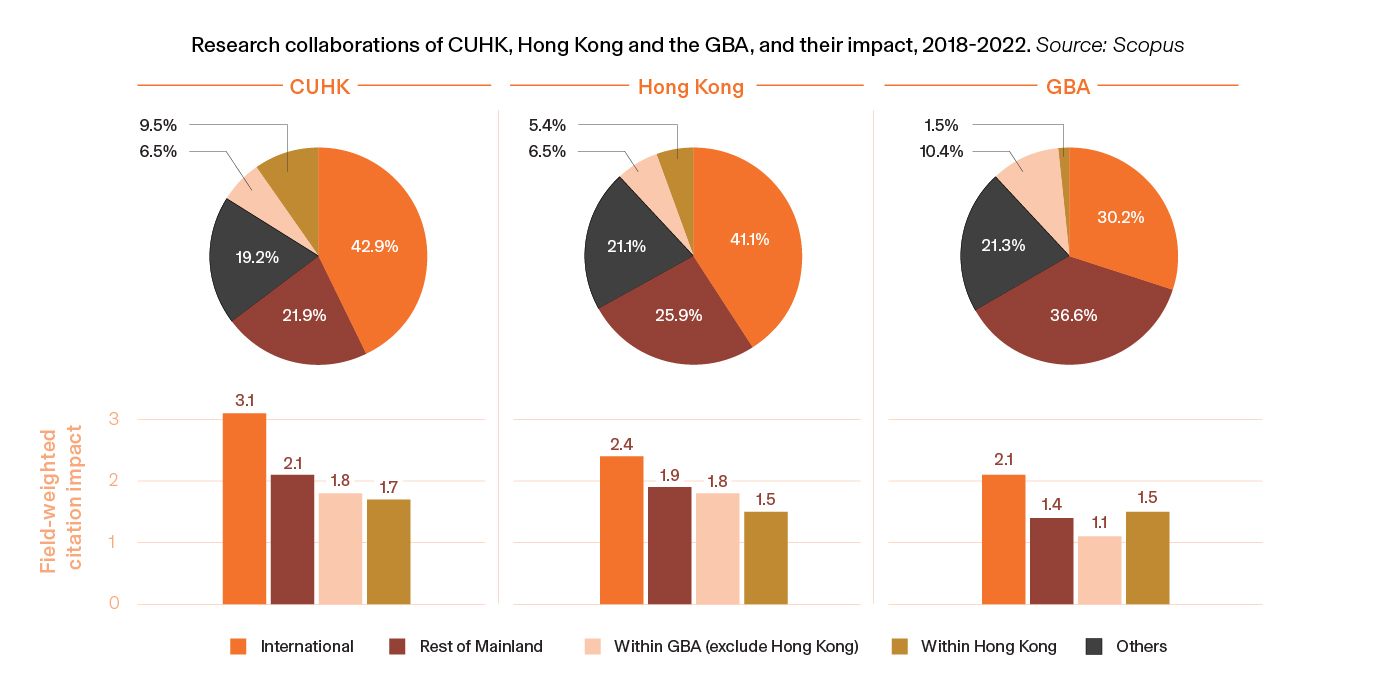
Professor Sham said: “The analysis points to Hong Kong’s role as a super connector and echoes the central government’s call for Hong Kong to position itself as a uniquely international innovation and technology hub. CUHK will redouble its efforts to ensure that it acts as a true bridge between the mainland and the world, and these numbers are a powerful reminder of the importance of our historic mission ‘to connect China and the West’.”
Lynn Li, president of Elsevier (Greater China), explained that the firm intended to showcase the research impact of the GBA in the report and support the scientific community in the region along their path of research and innovation, in order to enable technological advancement to better serve society as a whole.
Delivering closing remarks for the event, Pro-Vice-Chancellor (Student Experience) Professor Nick Rawlins agreed collaborations between disciplinaries, the academia, industries, and on an international level were all conducive to advancing research, noting the report confirmed the importance of Hong Kong and CUHK in the GBA development.
The Elsevier report was launched at a special event at the CUHK Shenzhen Research Institute under the theme, “Igniting New Quality Productive Forces: CUHK’s Research Impact and Contribution to the GBA”. The event featured a keynote address from Huawei’s vice-president of global technical cooperation and a panel session with Li, and Dr Lan Xin, Deputy Director of Nanshan District Innovation Development Promotion Centre of Shenzhen.
By Joyce Ng
Click here for the summary of the Elsvier report (Simplified Chinese only)
Click here for the full Elsevier report

